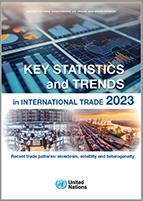
Global trade has followed a highly volatile pattern since the onset of the COVID-19 pandemic. Fragmentation and increased heterogeneity of trade performance characterize not only the rebound of 2021 and 2022 but also the recent trade slowdown, albeit to a lesser extent.
While it is premature to definitively assert whether the recent trend is a substantial departure from established global trade trends, it appears possible that COVID-19 disruptions initiated a significant shift in global trade, now fuelled by systemic patterns tied to geopolitical issues and risk-mitigating strategies.
The convergence of these factors raises the possibility that global trade patterns will be undergoing more significant changes, ushering in a new era with distinct challenges and opportunities for economies worldwide.
Monitoring these developments closely is crucial in understanding the implications of evolving trade dynamics for developing countries.
This report is structured into two parts.
The first part presents a short-term overview of the status of international trade using preliminary statistics on merchandise trade until the first half of 2023.
The second part provides illustrative statistics on international trade in goods and services covering the medium term. The second part is divided into two sections.
- Section 1 provides trade statistics at various levels of aggregation that illustrate the evolution of trade across economic sectors and geographic regions.
- Section 2 presents trade indicators to inform on some specifics of the trade patterns at the country level.


